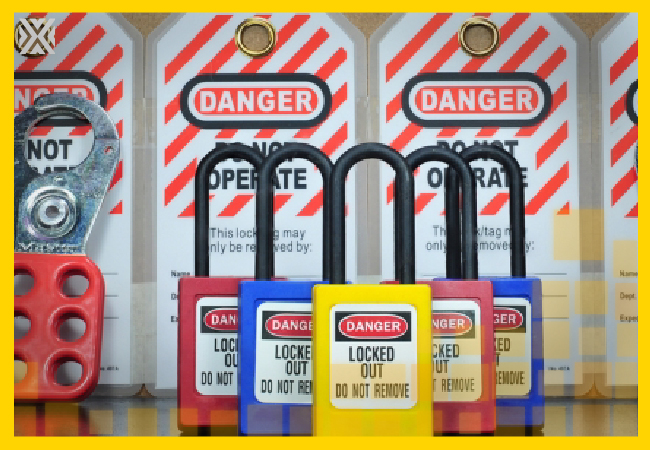Currency
December 05, 2018

Lockout/tagout, known as LOTO, is the concept of controlling hazardous energy, usually in order to service or perform maintenance on machinery. Planning the work, identifying all energy sources to be controlled and the means for verifying disconnection, training employees and supervisors on the procedures to follow to ensure they work safely, and providing the necessary devices and equipment—locks, tags, etc.—should be addressed in the employer's written LOTO plan for carrying out the work.
Appendix A of OSHA's 1910.147 lockout standard offers a simple lockout procedure that the agency says could benefit employers as they develop their procedures, so that they'll meet the standard's requirements. The appendix explains when tagout may be used—only when the energy-isolating devices are not lockable and the employer complies with the standard's provisions requiring additional training and more rigorous, periodic inspections.
The procedure establishes the minimum requirements for lockout of energy-isolating devices. It lists a sequence of steps to follow, beginning with notifying all affected employees that servicing or maintenance is required on a machine or on equipment that must be shut down and locked out. The procedure says, "All employees are required to comply with the restrictions and limitations imposed upon them during the use of lockout. The authorized employees are required to perform the lockout in accordance with this procedure. All employees, upon observing a machine or piece of equipment which is locked out to perform servicing or maintenance shall not attempt to start, energize, or use that machine or equipment."

Other steps in the sequence include having the authorized employee:
refer to the company's procedure to identify the type(s) and magnitude of energy the equipment utilizes,
understand the hazards of the energy, and
now the methods to control the energy.
Next, if the machine or equipment is operating, it should be shut down by the normal stopping procedure, then the energy-isolating device(s) should be locked out with assigned, individual locks, and stored or residual energy must be dissipated or restrained by methods such as grounding, repositioning, blocking, bleeding down, etc., it states.
The authorized employee is then to ensure the machine is disconnected from the energy source(s) by first checking that no personnel are exposed, then verifying the isolation of the equipment by operating the push button or other normal operating control(s) or by testing to make certain the equipment will not operate. ("Caution: Return operating control(s) to neutral or 'off' position after verifying the isolation of the equipment," it warns.)
When all of this is done, the machine is locked out.
Appendix A of OSHA's 1910.147 lockout standard offers a simple lockout procedure that the agency says could benefit employers as they develop their procedures, so that they'll meet the standard's requirements. The appendix explains when tagout may be used—only when the energy-isolating devices are not lockable and the employer complies with the standard's provisions requiring additional training and more rigorous, periodic inspections.
The procedure establishes the minimum requirements for lockout of energy-isolating devices. It lists a sequence of steps to follow, beginning with notifying all affected employees that servicing or maintenance is required on a machine or on equipment that must be shut down and locked out. The procedure says, "All employees are required to comply with the restrictions and limitations imposed upon them during the use of lockout. The authorized employees are required to perform the lockout in accordance with this procedure. All employees, upon observing a machine or piece of equipment which is locked out to perform servicing or maintenance shall not attempt to start, energize, or use that machine or equipment."

Other steps in the sequence include having the authorized employee:
refer to the company's procedure to identify the type(s) and magnitude of energy the equipment utilizes,
understand the hazards of the energy, and
now the methods to control the energy.
Next, if the machine or equipment is operating, it should be shut down by the normal stopping procedure, then the energy-isolating device(s) should be locked out with assigned, individual locks, and stored or residual energy must be dissipated or restrained by methods such as grounding, repositioning, blocking, bleeding down, etc., it states.
The authorized employee is then to ensure the machine is disconnected from the energy source(s) by first checking that no personnel are exposed, then verifying the isolation of the equipment by operating the push button or other normal operating control(s) or by testing to make certain the equipment will not operate. ("Caution: Return operating control(s) to neutral or 'off' position after verifying the isolation of the equipment," it warns.)
When all of this is done, the machine is locked out.









